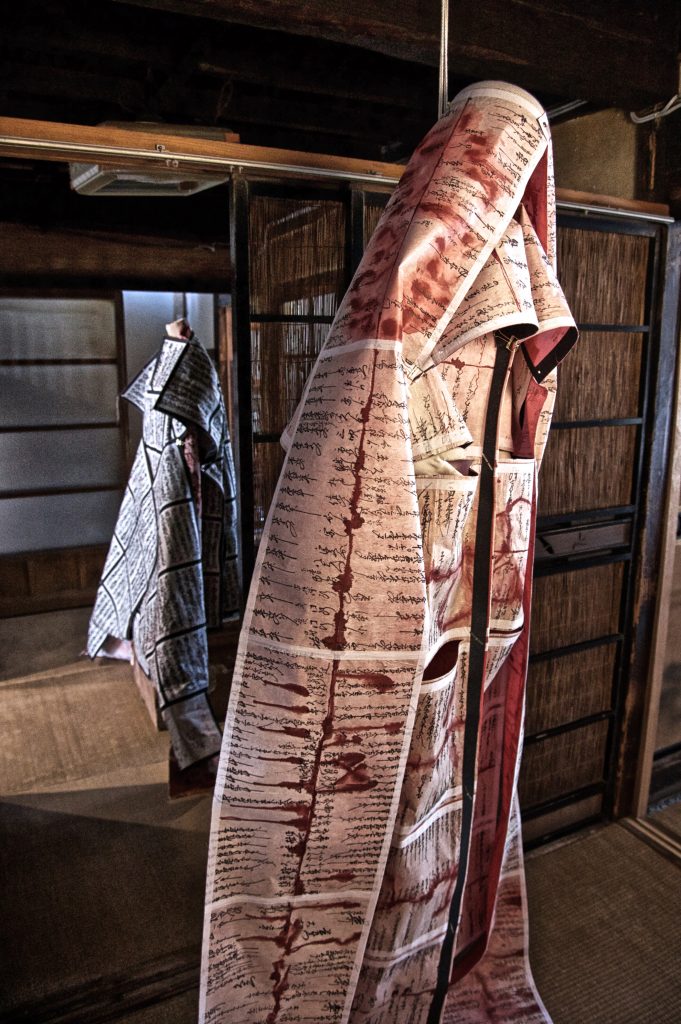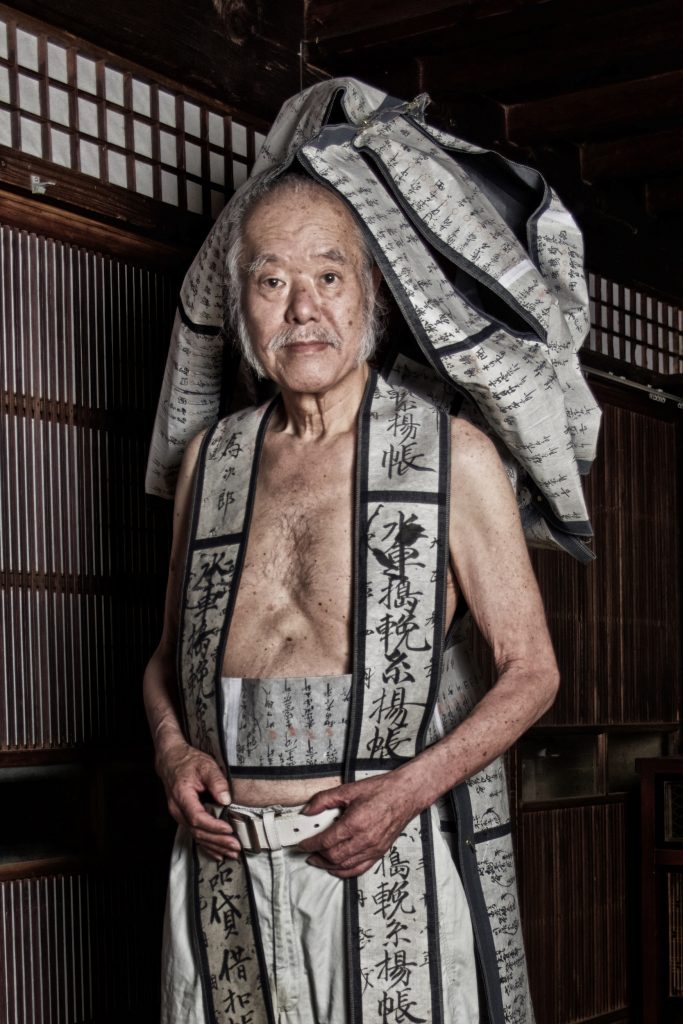








2019 Onishi | Go Uta-Karuta: Garment made from antique Instructions for Go-play and Uta-Karuta playing cards. A traditional set of uta-garuta contains 100 cards, with a waka poem written on each. The standard collection of poems used is the Hyakunin Isshu, chosen by poet Fujiwara no Teika in the Heian period.
Cuculla – Fixing the stone whisperer: Repentance robe out of a loan book of a stone merchant. Washi Paper. Scripted in Japanese ca 1890. Inspired by a cowl garment. Developed during the early Middle Ages, the formal garment for those in monastic life.
Switching sleeves for the sovereign: Shemale garment made out of a kabuki play script about betrayal and murder.
Memorial Obi for Izumo no Okuni: Izumo no Okuni is believed to have invented the new theatrical art form of kabuki (“the art of singing and dancing”). She created a new style of an exclusively female troupe, but in 1629 shōgun Tokugawa Iemitsu forbade women from performing in kabuki. As young men as performer generated the same issues of prostitution and corruption of morals, the performances were restricted to older men, which is a standing practice even today.
Skinning (the silkbreeder): Cocooning garment made out of a inventory ledger of a silk merchant. scripted ca 1890.